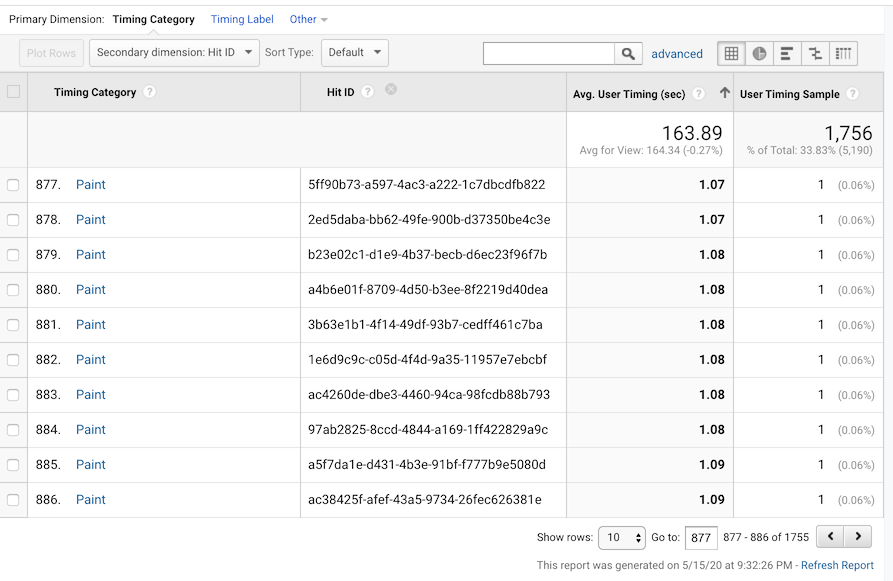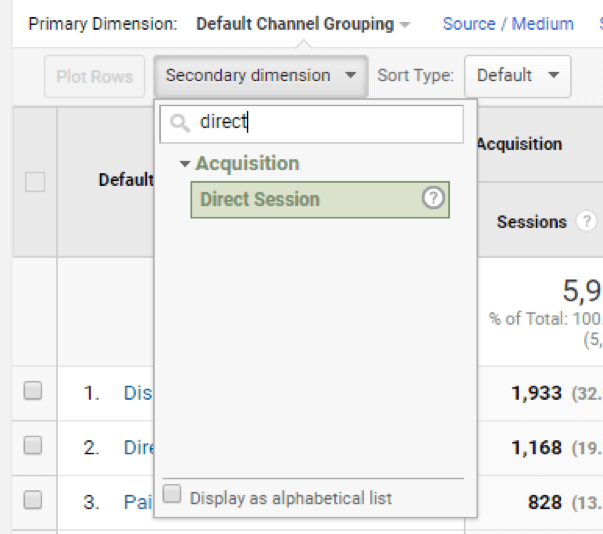Transform Your Analytics Method With Additional Measurement in Google Analytics
By integrating additional measurements into information evaluation, a new layer of understandings arises, losing light on complex individual actions and communications. The tactical application of second measurements holds the key to unlocking a treasure trove of indispensable details that can reinvent how services analyze and act upon their data.
Understanding Secondary Measurements in Google Analytics
Second measurements in Google Analytics provide added context to key data by allowing users to analyze metrics across a 2nd dimension, providing deeper insights right into user behavior and communications on a website. Secondary Dimension in Google Analytics. While main dimensions provide fundamental data points such as pageviews, bounce price, and session period, additional measurements supply a more in-depth view by segmenting the primary information further. This segmentation allows customers to evaluate metrics in combination with an additional measurement, such as website traffic sources, demographics, or individual actions
Advantages of Making Use Of Additional Measurements
Using additional dimensions in Google Analytics uses a calculated benefit by enhancing the deepness of analysis and supplying an extra comprehensive understanding of individual communications and habits on a site. By integrating additional dimensions, analysts can gain beneficial insights into the efficiency of particular sectors or variables within their information. This makes it possible for an extra comprehensive assessment of user habits beyond surface-level metrics, enabling for a much deeper exploration of the elements influencing user involvement and conversions.

How to Execute Second Dimensions
When including second dimensions in Google Analytics, one important action is to select the appropriate metrics and dimensions to enhance the evaluation procedure. To apply additional dimensions effectively, begin by accessing your Google Analytics account and navigating to the record you desire to boost with added information. When in the report, situate the "Second Measurement" button, normally discovered over the data table. Clicking on this switch will open a drop-down menu listing numerous dimensions that can be contributed to your key dimension for deeper insights.
After picking the ideal secondary dimension, such as 'Source/Medium' or 'Gadget Classification,' Google Analytics will present the information in a more in-depth layout, permitting you to cross-analyze different facets of user behavior. Keep in mind to trying out various combinations of main and second dimensions to uncover important patterns and fads that can educate your advertising and marketing approaches. By applying secondary dimensions thoughtfully, you can get a much more comprehensive understanding of your internet site or app efficiency and make data-driven decisions to enhance your digital presence.
Studying Data With Additional Measurements
Improve your data analysis in Google Analytics by including second dimensions to dig much deeper right into user habits patterns and enhance your digital advertising and marketing techniques properly - Secondary Dimension in Google Analytics. By adding secondary measurements to your main information, you can obtain beneficial understandings that can help you make notified choices concerning your website or application performance
Assessing data with additional measurements permits you to segment your primary data even more, providing an extra thorough sight of user communications. For instance, incorporating the main measurement of 'source/medium' with a secondary measurement like 'landing web page' can reveal which certain pages are driving web traffic navigate to these guys from various sources. This info can be crucial in improving your material approach or optimizing your marketing campaign to enhance conversions.
In addition, using secondary dimensions enables you to recognize correlations between various metrics, top article aiding you comprehend the influence of various variables on individual actions. Whether it's examining demographics alongside customer engagement metrics or gadget classifications with conversion prices, additional dimensions encourage you to reveal concealed trends and patterns that can assist your advertising efforts.
Optimizing Performance With Second Dimensions
To enhance the effectiveness of data analysis and decision-making in Google Analytics, integrating additional dimensions is vital to maximizing performance metrics and gaining deeper insights right into individual actions patterns. By using secondary measurements, experts can dive past surface-level data and reveal valuable connections that might or else go unnoticed. This optimization approach allows services to customize their marketing efforts much more efficiently, recognize locations for renovation in site use, and boost general customer experience.
Second measurements provide a more comprehensive sight of customer communications by supplying additional context to primary information metrics. Pairing the primary dimension of 'touchdown web page' with a second dimension like 'tool group' can disclose whether specific tools are extra likely to drive interaction on certain landing pages. This understanding can educate responsive design improvements or targeted marketing approaches to improve performance.

Conclusion
To conclude, the combination of secondary measurements in Google Analytics offers companies with an effective tool to enhance their analytics method. Secondary Dimension in Google Analytics. By delving deeper right into individual behavior and communications, marketing professionals can uncover beneficial insights that can drive efficiency optimization and enhance the total individual experience. Leveraging secondary dimensions enables an extra detailed evaluation of information, resulting in even more informed decision-making and customized advertising efforts
Secondary measurements in Google Analytics offer additional context to key data by permitting individuals to evaluate metrics throughout a 2nd measurement, providing deeper insights into customer habits and communications on a site. While key dimensions give fundamental information points such as pageviews, bounce price, and session period, additional dimensions offer an even more in-depth view by segmenting the primary information additionally.One of the essential advantages of utilizing secondary measurements is the capacity to discover correlations and patterns that may not be right away obvious when examining data with primary measurements alone.When incorporating additional dimensions in Google Analytics, one important step is to choose the see page appropriate metrics and measurements to improve the evaluation process. Pairing the primary measurement of 'touchdown web page' with an additional dimension like 'tool group' can disclose whether particular gadgets are a lot more likely to drive involvement on specific touchdown web pages.